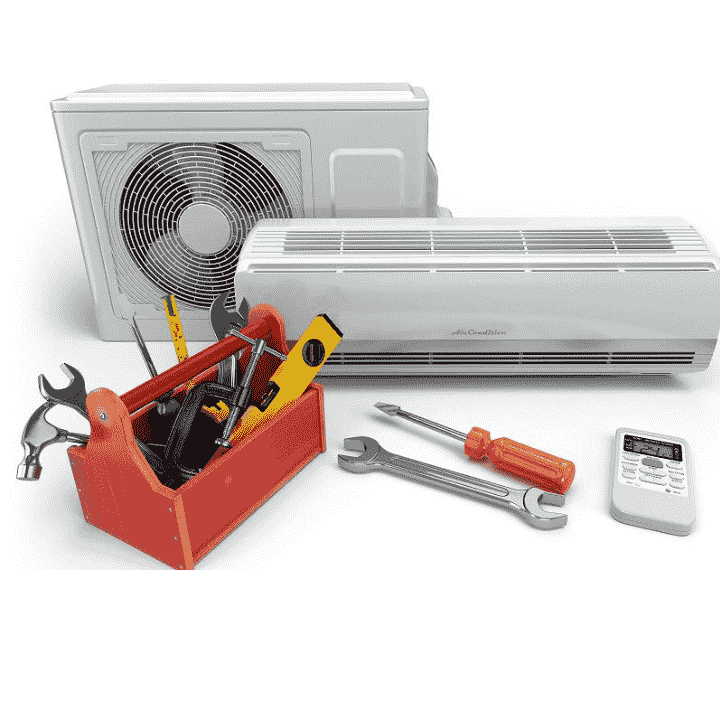10-Step Guide for Air Conditioner Installation
Installing an air conditioner can significantly improve the comfort of your home, especially during the hot summer months. While the process can seem daunting, breaking it down into manageable steps can simplify the task. Whether you’re installing a window unit, a split system, or a central air conditioning unit, the following comprehensive guide will help ensure a smooth installation. Here’s a detailed guide on the ten steps for Air Conditioner Installation
Step 1: Select the Right Location
The first step in installing an air conditioner is choosing the right location for both the indoor and outdoor units. Proper placement is crucial for efficient cooling and system longevity.
Indoor Unit Location:
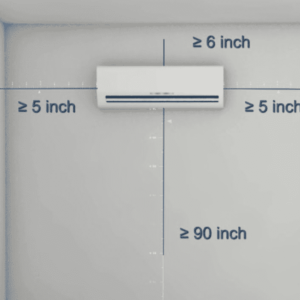
- Central Position: Place the indoor unit in a central location within the room to ensure even cooling. Avoid corners or areas where the airflow might be obstructed.
- Height: Mount the unit at a height that allows for optimal airflow. For split systems, this is usually high on the wall but not too close to the ceiling.
- Avoid Direct Sunlight: Direct sunlight can reduce the efficiency of the unit. Choose a shaded area or one that does not receive direct sunlight throughout the day.
- Accessibility: Ensure the unit is easily accessible for regular maintenance and cleaning.
Outdoor Unit Location:
- Airflow: Place the outdoor unit in a well-ventilated area with plenty of space around it to allow for proper airflow. Avoid cramped spaces or areas with lots of debris.
- Shade: Similar to the indoor unit, placing the outdoor unit in a shaded area can improve efficiency. However, ensure it’s not in an area where falling debris could block the unit.
Air Conditioner Installation
- Noise Consideration: The outdoor unit can be noisy. Place it away from bedrooms or living areas to minimise noise disturbances.
- Foundation: Ensure the outdoor unit is placed on a stable, level surface such as a concrete pad to prevent vibrations and noise.
Step 2: Gather Necessary Tools and Materials
Before beginning the installation, gather all necessary tools and materials. Having everything ready will make the process smoother and faster.
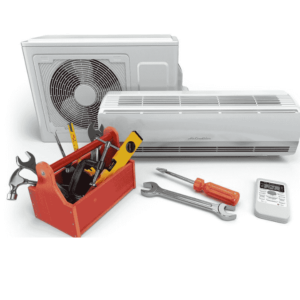
Common Tools:
- Drill: For making holes in walls for mounting brackets and running pipes.
- Screwdrivers: Both flathead and Phillips for securing screws and opening electrical panels.
- Level: To ensure the units are mounted perfectly horizontal.
- Tape Measure: For measuring distances and ensuring accurate placement.
- Wrench Set: For tightening connections and bolts.
- Vacuum Pump: For removing air and moisture from the refrigerant lines.
- Refrigerant Gauge Set: For checking refrigerant levels and pressure.
Materials:
- Mounting Brackets: For securing the indoor and outdoor units.
- Screws and Wall Anchors: To securely mount brackets and units.
- Sealant: To seal any gaps around pipes or wiring holes.
- Insulation Tape: For wrapping refrigerant pipes to prevent condensation and improve efficiency.
- Drain Pipe: To allow for proper drainage of condensate.
- Electrical Wiring: For connecting the indoor and outdoor units to the power supply.
Step 3: Install the Mounting Plate
For split systems, the indoor unit needs to be mounted on a wall using a mounting plate. This step is crucial to ensure the unit is secure and level.
- Position the Mounting Plate: Hold the mounting plate against the wall at the desired height. Use a level to ensure it’s perfectly horizontal. Air Conditioner Installation
- Mark the Screw Holes: Use a pencil to mark the locations of the screw holes on the wall.
- Drill Holes: Drill holes at the marked locations. If the wall is made of concrete or brick, use appropriate wall anchors.
- Secure the Mounting Plate: Attach the mounting plate to the wall using screws. Make sure it is firmly attached and can support the weight of the indoor unit.
Step 4: Drill a Hole for the Piping
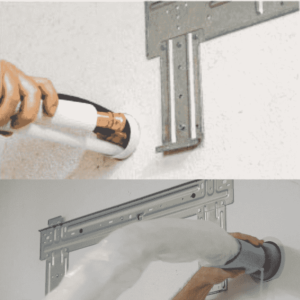
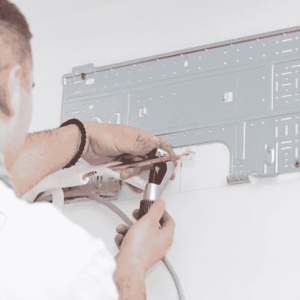
To connect the indoor and outdoor units, you’ll need to run refrigerant pipes, a drainage pipe, and electrical wiring through the wall.
- Choose the Right Spot: Select a spot close to the indoor unit where the pipes and wiring will exit the building. The hole should be slightly angled downward toward the outside to facilitate drainage.
- Drill the Hole: Using a drill and a suitable bit (usually around 3 inches in diameter), drill the hole through the wall. Be careful to avoid any electrical wires or plumbing inside the wall. Air Conditioner Installation
- Seal the Hole: Once the hole is drilled, insert a protective sleeve or conduit to prevent damage to the pipes and wiring. Seal around the sleeve with sealant to prevent air leaks and water ingress.
Step 5: Mount the Indoor Unit
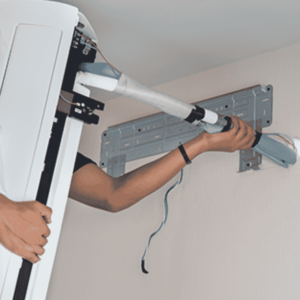
With the mounting plate in place and the hole drilled, it’s time to mount the indoor unit.
- Feed Pipes and Wiring: Carefully feed the refrigerant pipes, drainage pipe, and electrical wiring through the hole in the wall.
- Mount the Unit: Hang the indoor unit on the mounting plate. Ensure it is securely attached and level. This may require the help of a second person to hold the unit while you secure it in place. Air Conditioner Installation
- Connect Pipes and Wiring: Connect the refrigerant pipes and drainage pipe to the indoor unit according to the manufacturer’s instructions. Connect the electrical wiring to the unit’s terminal block, ensuring all connections are secure and properly insulated.
Step 6: Install the Outdoor Unit
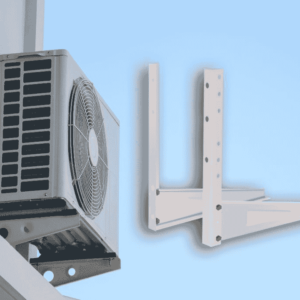
The outdoor unit installation is crucial for the system’s overall performance and efficiency.
- Position the Unit: Place the outdoor unit on a stable, level surface such as a concrete pad or sturdy brackets. Ensure there is sufficient clearance around the unit for airflow and maintenance access.
- Secure the Unit: If using brackets, securely fasten the outdoor unit to the brackets with bolts. If placing on a pad, ensure the unit is stable and level.
- Connect Refrigerant Lines: Carefully connect the refrigerant lines from the indoor unit to the outdoor unit. Use a wrench to tighten the connections, ensuring they are secure but not over-tightened.
Step 7: Connect the Piping and Wiring
Connecting the refrigerant piping and wiring is a critical step that requires attention to detail to ensure a safe and efficient installation.
- Refrigerant Piping: Connect the refrigerant pipes between the indoor and outdoor units. Ensure the connections are tight and leak-free. Wrap the connections with insulation tape to prevent condensation and improve efficiency.
- Drainage Pipe: Connect the drainage pipe to the outdoor unit and ensure it is properly sloped to allow for effective water drainage.
- Electrical Wiring: Connect the electrical wiring according to the manufacturer’s instructions. Ensure all connections are secure and properly insulated to prevent electrical hazards.
Step 8: Vacuum the Lines
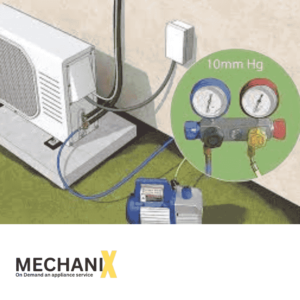
To ensure the system operates efficiently and reliably, it’s essential to remove any air and moisture from the refrigerant lines.
- Connect the Vacuum Pump: Attach the vacuum pump to the service port on the outdoor unit.
- Run the Vacuum Pump: Turn on the vacuum pump and let it run for about 30-45 minutes to remove all air and moisture from the lines.
- Check for Leaks: After vacuuming, close the service port and check the refrigerant lines for leaks. Apply a soap solution to the connections and look for bubbles, which indicate leaks. Tighten connections as necessary.
Step 9: Check for Leaks
Ensuring there are no leaks in the refrigerant lines is crucial for the efficient and safe operation of the air conditioner.
- Soap Solution Test: Apply a soap solution to all refrigerant line connections and look for bubbles, which indicate leaks.
- Tighten Connections: If bubbles are present, tighten the connections and repeat the test until no bubbles are observed.
- Final Inspection: Perform a final inspection of all connections to ensure they are secure and leak-free.

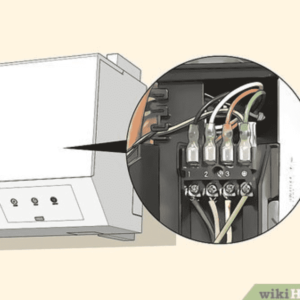
Step 10: Test the System
The final step is to test the air conditioner to ensure it’s working correctly and efficiently. Air Conditioner Installation
- Power On: Turn on the power supply to the air conditioner.
- Set the Thermostat: Set the thermostat to the desired temperature and let the unit run for a while.
- Check Cooling Performance: Ensure the indoor unit is blowing cool air and the outdoor unit is operating smoothly. Air Conditioner Installation
- Listen for Noises: Check for any unusual noises or vibrations from both the indoor and outdoor units. Address any issues immediately. Air Conditioner Installation
- Inspect Drainage: Ensure the drainage system is working properly and there are no water leaks.
By following these ten steps, you can successfully install your air conditioner, ensuring optimal performance and efficiency. If at any point you feel unsure or encounter difficulties, it’s always best to consult a professional installer to avoid potential issues and ensure a safe and reliable installation.
Air Conditioner Installation
Air Conditioner Installation
Air Conditioner Installation
Air Conditioner Installation
Air Conditioner Installation
